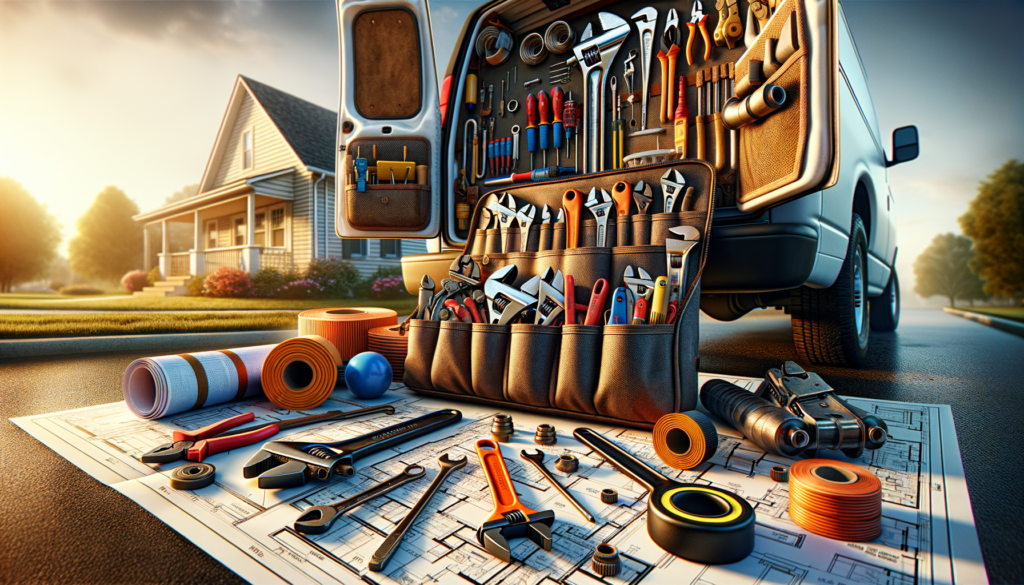The Gaming Blog

A Day in the Life of a Plumber: The Business of Working
Introduction to the Plumber’s Role
Plumbers play an indispensable role in our daily lives, ensuring that our homes and businesses run smoothly with a consistent supply of clean water and efficient drainage systems. Their work often goes unnoticed until a problem arises, highlighting the importance of their expertise. This article delves into the daily operations of a plumber, shedding light on their crucial contributions to modern society.
Plumbers are responsible for a variety of tasks, from fixing leaks to installing new plumbing systems. Their work ensures that we have access to safe drinking water and that waste is effectively removed from our homes. Without plumbers, our modern conveniences would quickly become chaotic and unsanitary.
In this article, we will explore a typical day in the life of a plumber, examining the steps they take to diagnose problems, prepare tools and materials, perform repairs or installations, conduct testing and quality checks, and finally, ensure customer satisfaction through follow-ups and preventive recommendations.
Problem Diagnosis
The first step in a plumber’s day often involves diagnosing the problem at hand. Upon arriving at the site, the plumber assesses the situation to determine the root cause of the issue. This could involve checking pipes, joints, and fixtures for signs of water damage if a leak is suspected. In cases of blockages, plumbers might use a drain camera or auger to locate the obstruction.
For installations, reviewing blueprints and checking the existing plumbing layout is crucial. This ensures that any new systems will integrate seamlessly with the current setup. Once the problem is identified, the plumber communicates the findings to the client, providing a detailed explanation and a cost estimate. This transparency helps in gaining the client’s approval before any work begins.
Effective problem diagnosis requires a keen eye for detail and a thorough understanding of plumbing systems. It is a critical skill that sets the foundation for successful repairs or installations. By accurately identifying the issue, plumbers can ensure that their solutions are both effective and long-lasting.
Preparing Tools and Materials
Once the problem is diagnosed, the next step is to prepare the necessary tools and materials. Depending on the nature of the job, a plumber may need a variety of tools, including basic ones like wrenches, pliers, and pipe cutters, as well as specialized equipment such as unclogging tools, high-pressure water guns, or welding torches.
In addition to tools, plumbers often require replacement parts such as pipes, fittings, seals, or new fixtures. If additional materials are needed, a trip to the supply store might be necessary before beginning the repair or installation. This preparation phase is crucial for ensuring that the plumber has everything needed to complete the job efficiently and effectively.
Having the right tools and materials on hand not only speeds up the repair process but also minimizes disruptions for the client. It demonstrates the plumber’s professionalism and commitment to delivering high-quality service. By being well-prepared, plumbers can tackle even the most complex plumbing issues with confidence.
Performing Repairs or Installations
With tools and materials ready, the plumber proceeds to perform the necessary repairs or installations. For leaky pipes, the first step is to turn off the water supply to prevent further damage. The plumber then drains any remaining water from the affected pipes and uses a pipe cutter to remove the damaged section. New pipes or fittings are installed and secured with solder, clamps, or crimp fittings. Once the repair is complete, the water is turned back on to check for leaks.
Unclogging drains involves a series of steps, starting with the use of a plunger for minor clogs. For deeper obstructions, an unclogging tool or high-pressure water jet may be required to remove stubborn buildup. Testing the drainage with running water ensures that the blockage has been effectively cleared.
When installing new pipes, plumbers must follow building codes to ensure that the pipes are the correct size and location. They measure and cut pipes to fit the layout and connect them using appropriate methods such as soldering, PVC glue, or push-fit fittings. Testing the system for leaks and water flow is the final step to ensure that everything is functioning as it should.
Testing, Quality Checks, and Client Handover
Before completing the job, thorough testing and quality checks are essential. The plumber ensures that the repaired or installed pipes are not leaking and that there is proper water pressure at faucets and showers. Efficient drainage of sinks, toilets, and tubs is also verified.
If any issues persist, adjustments are made until the system is functioning properly. This attention to detail is crucial for ensuring that the client is satisfied with the work and that the plumbing system is safe and efficient.
Once the work is complete, the plumber cleans the work area, removing old pipes and debris and wiping surfaces to remove dirt or water stains. The plumber then explains the work completed to the client, providing maintenance tips and recommendations for routine upkeep. Invoices are provided, and payments are processed, concluding the service with professionalism and care.









